The Differences In Suit Cuts – American vs. British vs. Italian Cut
There are three main categories to focus on when deciding on suit cuts: American, British, and Italian (a.k.a European). All have their pros and cons.
Knowing the differences isn’t about deciding which one is better. It is more about choice. The variety in suit cuts is something that we should always praise with suits.
American Suit Cuts
With the extra space around the waist, the American cut suits have a lot in common with the classic suits. However, they’re more comfortable than the other cuts.
Formal in its style yet classic enough to be recognizable from the other cuts, an American suit has roots as far back as the 19th century.
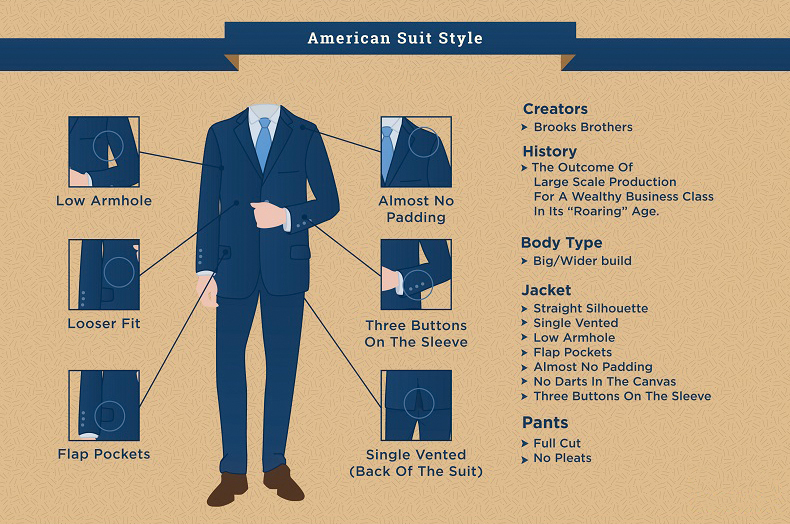
A lot of changes have taken place since then. Most notably, it has expanded from its Ivy League adopters.
Some of the American suit pioneers include the Brooks Brothers, responsible for making public adoption of the suit viable.
The American suit’s reinvention included improvements like natural shoulders, classic flap straight pockets, and better single-breasted options.
Jacket Features
Its straight silhouette and looser fit characterize the American suit jacket. It usually includes flap suit pockets and is quite often single-vented.

You will notice it by its low armhole and the buttons (usually three or four) on the sleeve.
The most common American jacket cut features include:
- Three buttons on the sleeve cuff
- Low armhole
- No darts
- Flap pockets
- Single vented
- Minimal padding
- Straight silhouette
Pants Features
The pants are usually a flat front, full cut with no pleats. In general, the manufacturers of this type of suit cuts have concentrated on mass production and saving materials.
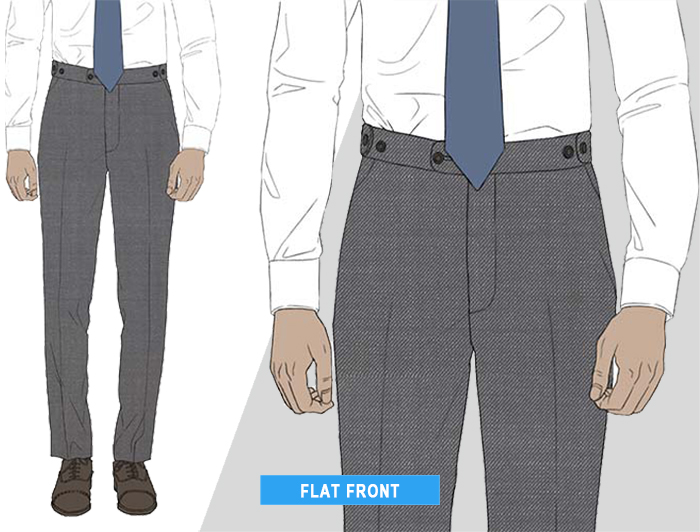
Present-day American cuts can now include shoulder padding but are still made to be loose-fitting.
They have a straight body line, making it universal wear for the office. The takeaway is that there is a smaller market for more expensive American cuts.
To summarize, American cut pants have:
- No pleats
- Flat front
- Full cut
British Suit Cuts
In the 19th-century, gentleman suits took off like never before, and the boom in the industry was more of a global shock.
The most traditional suit cut is British (a.k.a English), and it makes a point of not being too fancy. However, that lack of flair is part of its charm and the main reason to consider it.
The British cut is usually tailored closer to your body and is best for athletic or muscular body types. However, it gives you the solace your body needs.
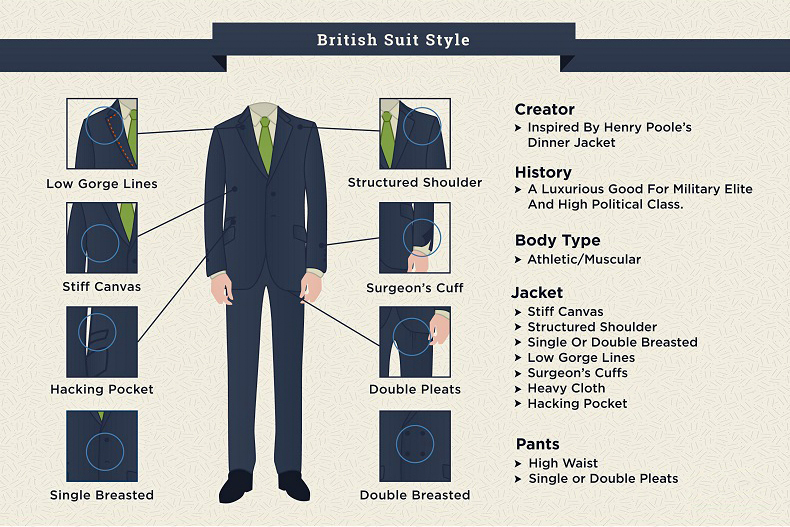
That comfort will go a long way in the workday and puts it on par with Italian suits for longevity. If ever in doubt about what cut to wear for work, it will always come down to American or British.
Jacket Features
Characterized by its structured shoulder and tick shoulder pats, the British suit jacket cuts give you a slimmer look. It’s stuck closer to the body, giving you that natural silhouette.
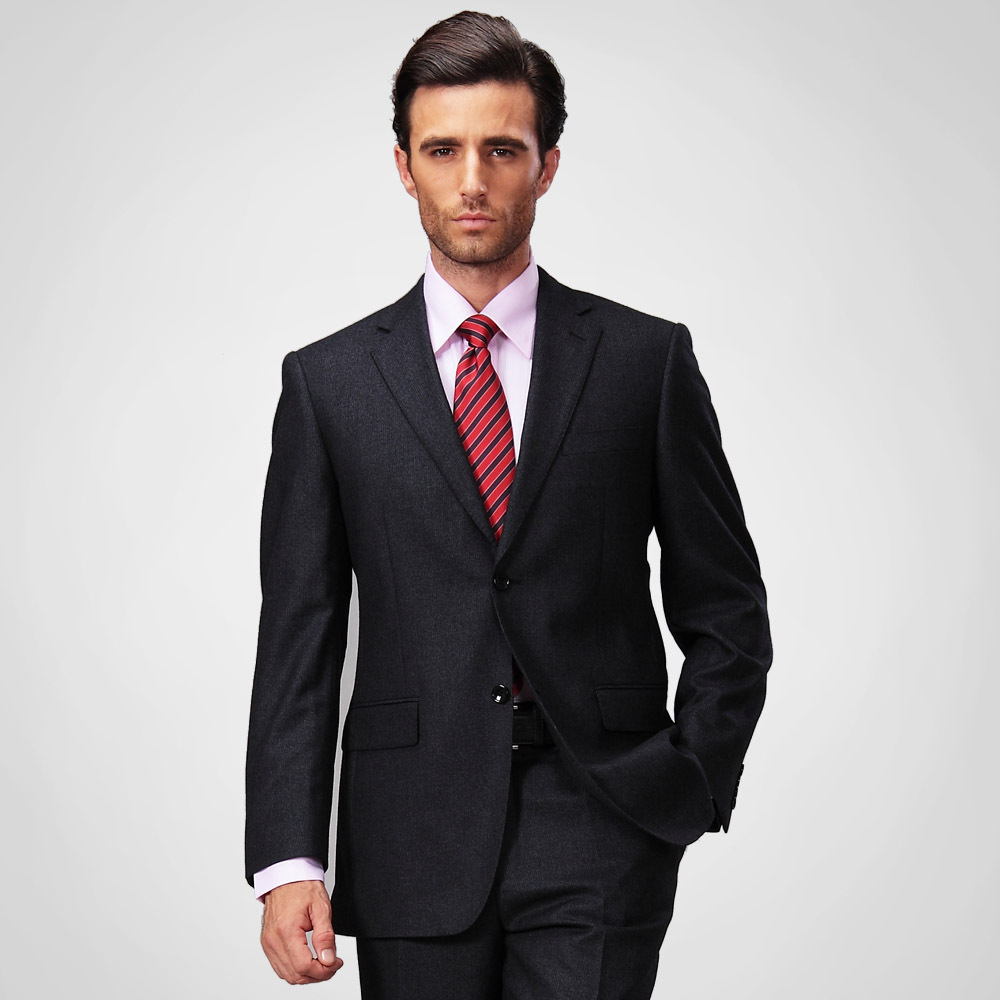
The fit is thinner than the American cuts. It’s usually single-breasted. However, that is not always the case.
Double-breasted British cut suits are now in fashion, too. The cloth is generally heavy, including the stiff canvas.
The features that define the British jacket has the following:
- Heavy cloth
- Low gorge lines
- Structured shoulders
- Stiff canvas
- Surgeons cuffs
- Double or single-breasted
- Hacking pockets
Pants Features
The pants are usually flat front with a high waist. But they can often be double-pleated as well.
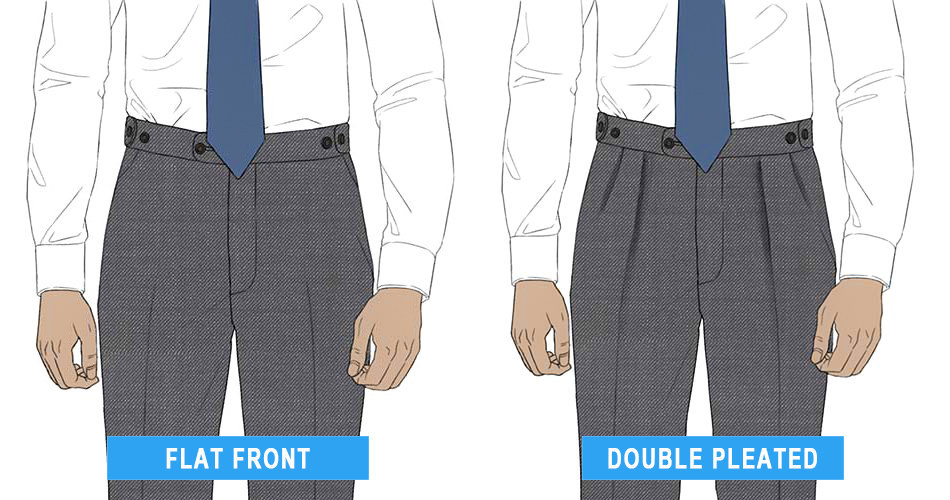
The best variety of fabric comes from British suits and will offer some of the hardest-to-find choices in the same colors.
In short, British pants are:
- Double or single-pleated
- With high waistline
Italian Suit Cuts
Also known as European, the Italian suit cuts are quite often slim-fitted. It covers a wide range of cuts but mostly concentrates on the ultra-popular Italian cut suit.
These are the cream of the crop and the most expensive for a reason. An Italian suit not only signals professionalism but exudes confidence.
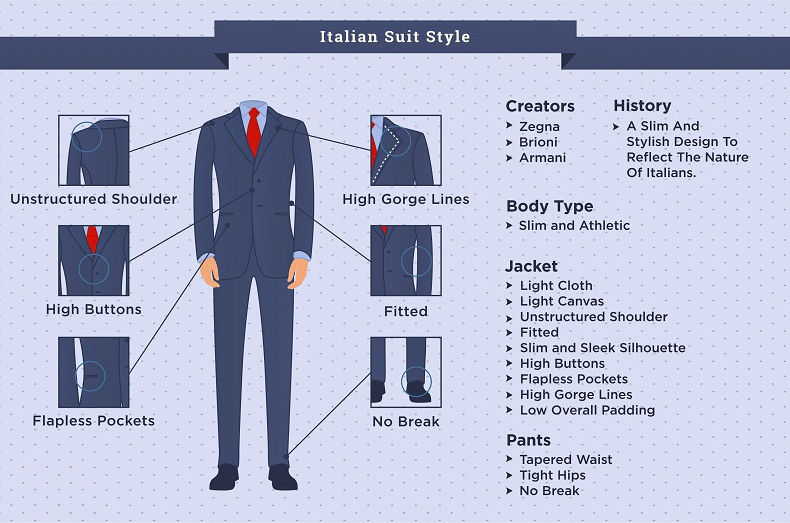
This cut trends more than any of the others and is the preferred way to say “I’ve arrived” in a manner of fashion. Innovators in this area would be Nazareno Fonticoli, Armani, and Ermenegildo Zegna.
Whenever there is a change in the industry, it is always sparked by an Italian movement.
Jacket Features
If there’s one thing that will feature the Italian jacket cut, it’s how it’s fitted to the body. It’s slim, reflecting a sleek silhouette.

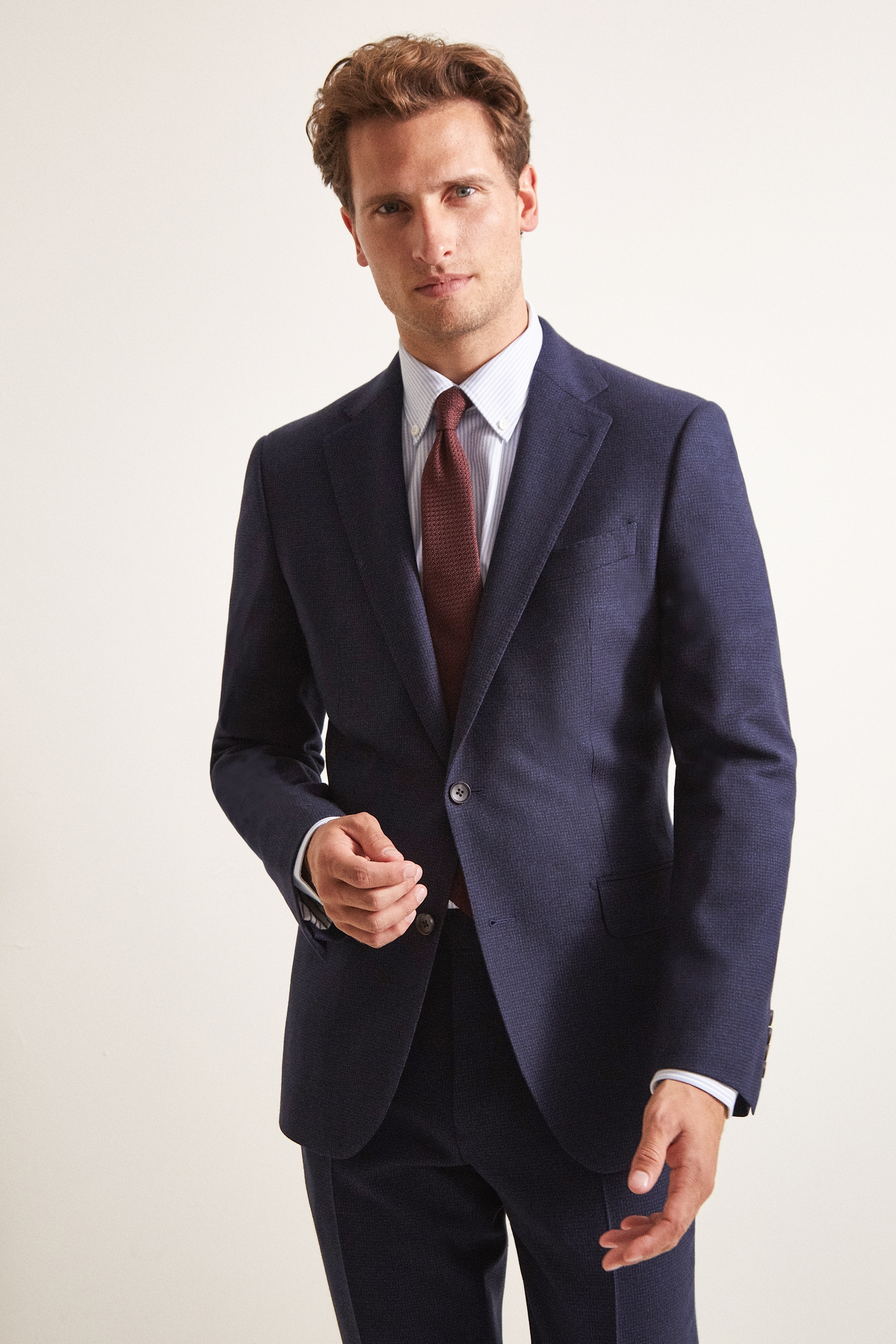
The fabric, cloth, and canvas are usually made of light material.
The shoulder is unstructured, matching smoothly with the sleeves. It usually features flapless pockets and high-button closures. The full Italian jacket feature list includes the following:
- Low padding
- Light canvas
- Unstructured shoulders
- Closely-fitted
- High gorge lines
- Flapless pockets
- High buttons
- Slim silhouette
- Light canvas
Pants Features
The Italian pants usually have no break at the bottom. In fact, it’s their tight hips and a tapered waist that characterizes them.
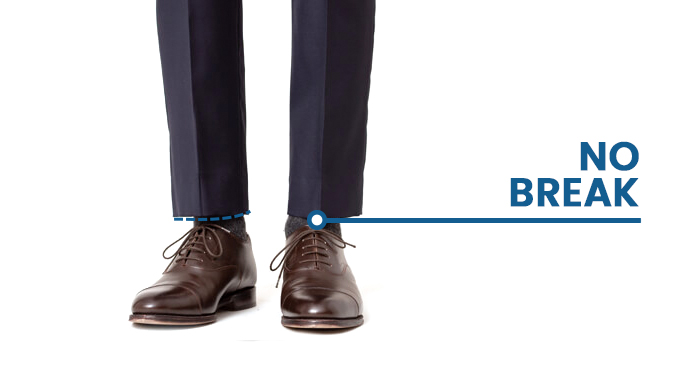
All of the Italian cuts are made to fit, so there is a trade-off with comfort. Wearers will be slightly less comfortable in an Italian suit and, as a result, will max out styling points.
The tightly fitted suit uses lighter fabric, which is less durable but looks better when fitted:
- No break
- Tapered waist
- Tight hips
Which Suit Cut to Choose?
There isn’t a strict rule that will define the cut you should choose. The first step in our ultimate suit guide is understanding the reason behind the purchase.
It’s all about the man in the suit. However, some thin rules can be applied!
For Beginners
If you haven’t purchased a suit before, jumping into an Italian suit is like buying a Ferrari. It is a bit “too much too soon” for most people, and they should take it with ease.
British or American is the way to go for beginners, with American cut being the more affordable choice.

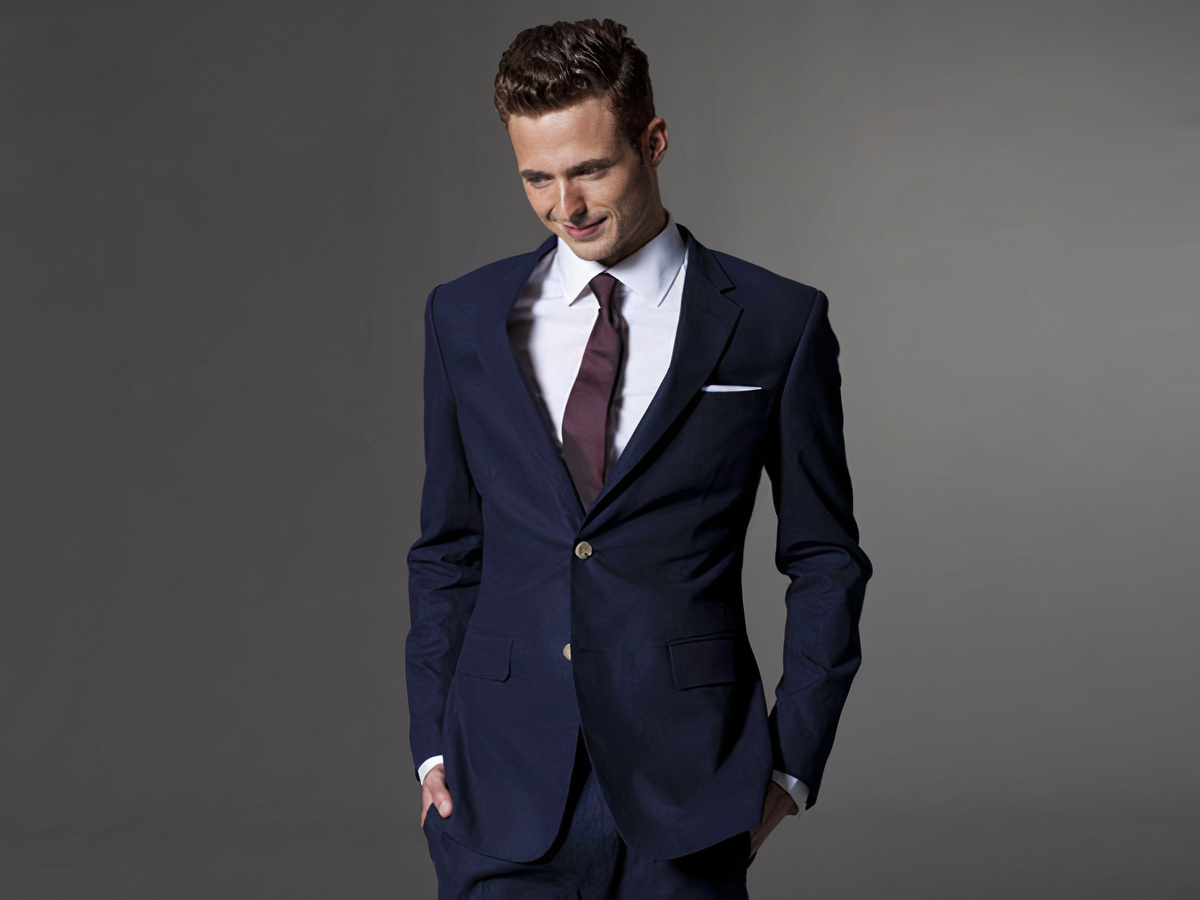
On the other hand, young people choose to stick with Italian suits quite too often. If the suit is well-fitted, that might be a great choice as well.


With price not being a factor, British cut suits are a great starting point. They’re comfortable and still maintain a professional look no matter which fabric is used.
With access to most fabrics, there is also more variety when matching pairs up.
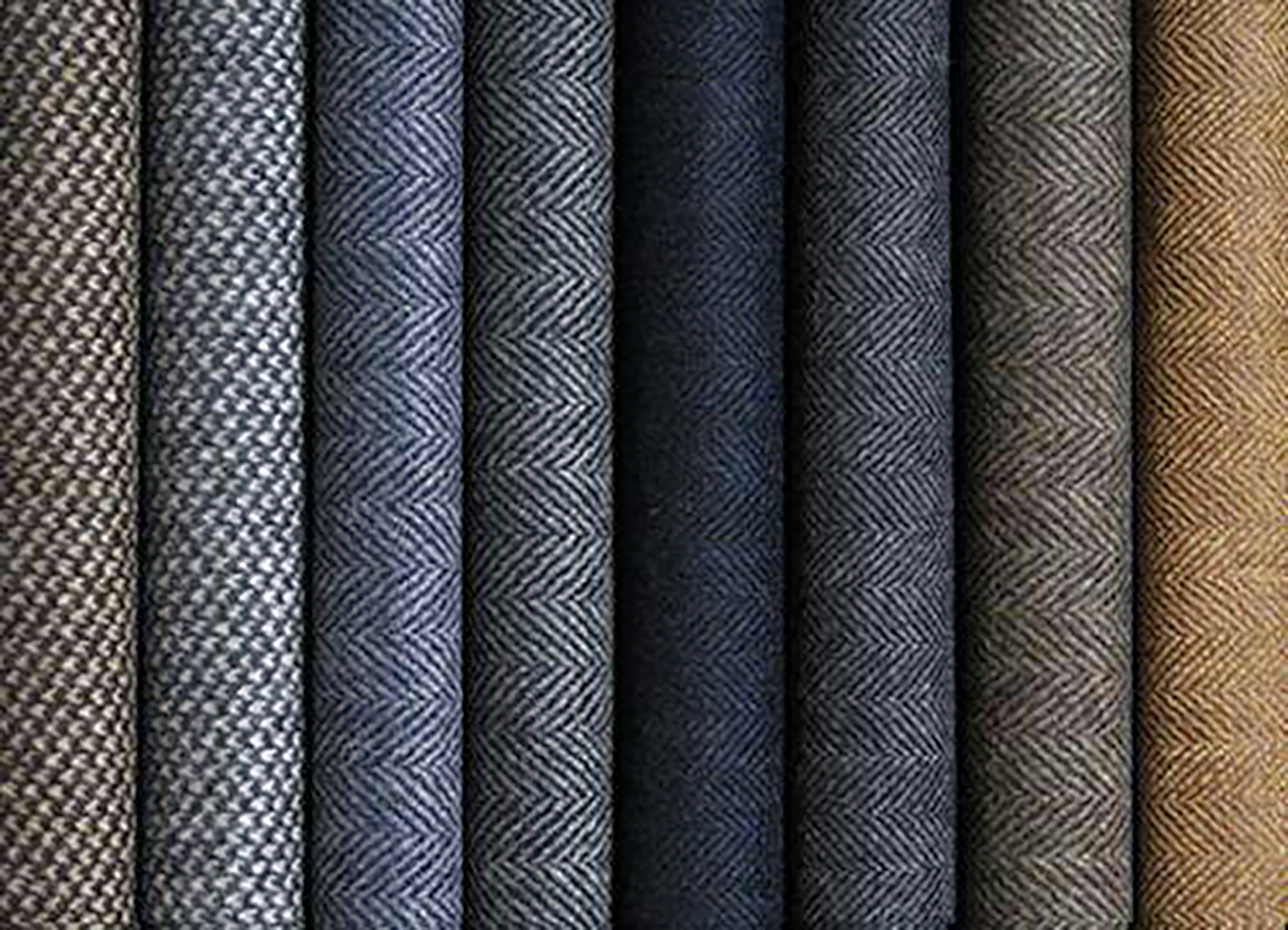
American suit cuts shouldn’t be considered a cheap option. The most expensive custom-tailored suits in the business world are made by American cut.
They tend to be the go-to option for anyone in a pinch. It also helps that a good percentage of sales come from high school prom students!
For Intermediate Wearers
Wearers that already have a couple of suits in the closet can creep into Italian cuts. The fun thing about being an intermediate suit wearer is that it offers the best of both worlds.
Now it isn’t so much about the suit’s cost and is more about being creative with styles.
At this point in the lifecycle, there are probably only a few American suit cuts in your closet, and you’re committed to staying that way.

Everything else from now on will be British or Italian tailoring, with preference going to what users feel more comfortable in.
British suits offer better comfort without compromising style like American suits, which is something worth considering.
When the time comes to settle on the first Italian cut, you’ll be proud to call yourself an expert.
It’s All About The Person In The Suit
Opinions aside, suits are supposed to bring out the best in the individual. But that can’t happen if there isn’t any knowledge of the actual clothing.
Knowing what to wear is just as important as the brand you’re going to buy. It applies to American, British, and even Italian cuts.

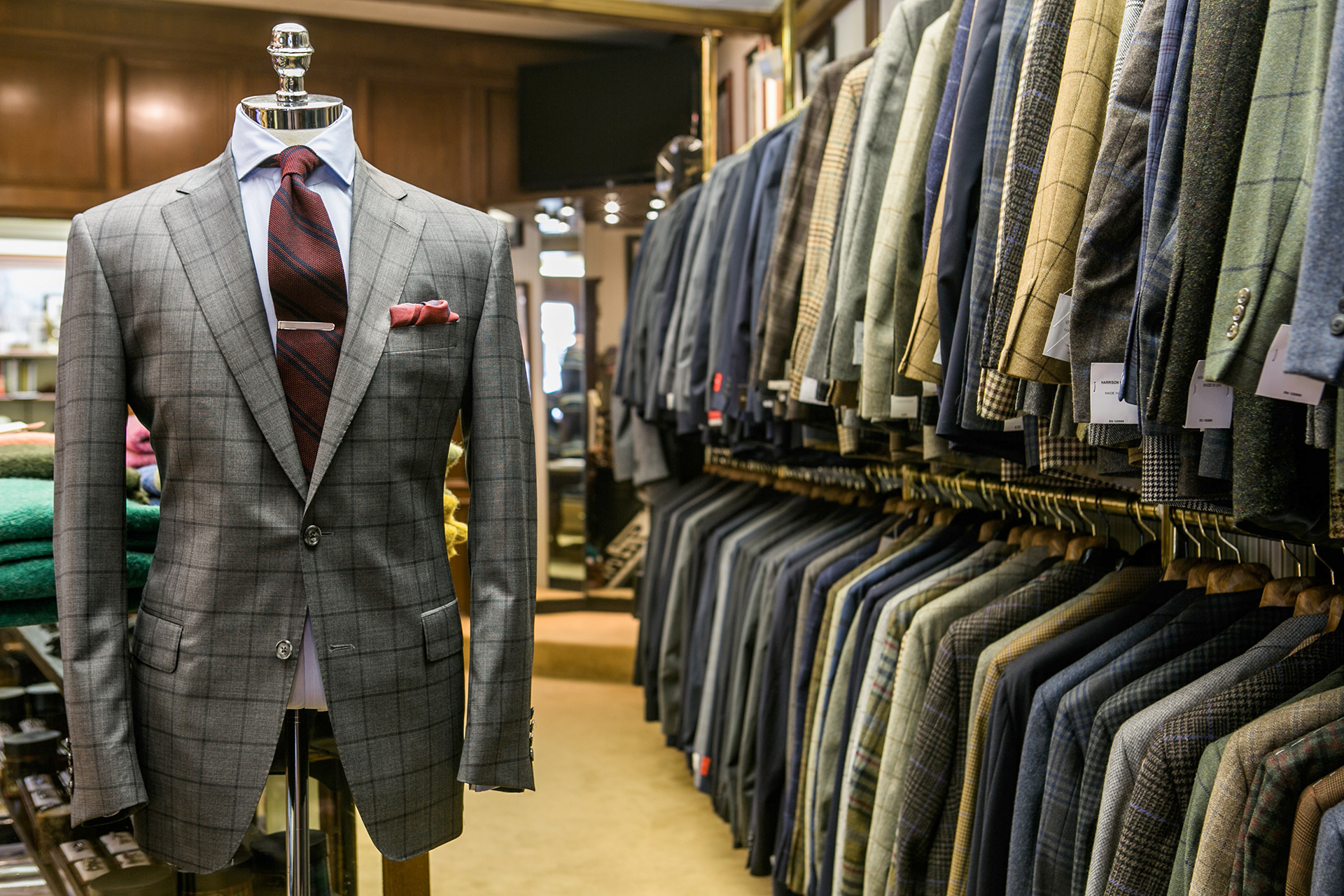
They all have their pros and cons, yet they’re all (literally) made from the same cloth. So if loose-fitting suits work better for a person, then that’s what they should wear!
The world of suit cuts can be fun, but history should only serve as a guide. Knowledge is power in any pursuit, and fashion requires a little bit of digging.
So take a pick and enjoy it, no matter what suit cut you choose.
Author: Alexander Stoicoff
Hi, I’m Alex, and I’ve studied and specialized in styling in Rome. Through my writing, I want to help men dress well and learn the purpose and significance of suits and other formal attire. My final goal is to make men more confident in their wardrobe choice and life in general.
FacebookTwitterLinkedIn






